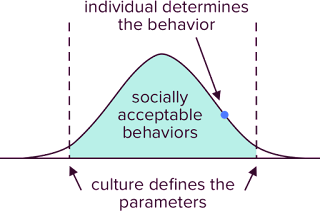Understanding Cultural Intelligence (CQ) and Its Importance in the Business World
 |
| Cultural Intelligence CQ |
Companies
often struggle to adapt to each other in a merger or acquisition. You often see
the employees of one company complaining about the employees of the other
company. In an Example of the merger between Oceanic and Eco, some complaints from staff of Eco might include:
- ·
“Team of Oceanic are so
disorganized”
- ·
"They're slow to read
and answer emails, so we're always on a different page."
- ·
"They keep skipping
over me to talk to my boss. It's really rude."
While
the Oceanic teams’ complaints will look like:
- ·
"The Eco execs
just can't keep up. They send endless email chains instead of getting to
work."
- ·
"You have to go
through so many layers to get a decision made. It's inefficient."
Both
teams think the other team is doing a bad job due to their different standards
of behavior.
In truth, neither team is objectively right or wrong. They simply have different cultures.
Culture refers to the values, norms, and customs that a group of people share.
The following groups probably share a culture:
- Members
of the same family – Everything from how you celebrate holidays to how you show
affections is part of your family culture
- Members
of the same religious organization – shared value and culture are important
part of most organized religions
- Students at the same university - Sure! Students at a university might value free speech, for instance, and share customs like wearing red to a football game.
- Players on the same sports team
- Citizens of the same country - Many people consider national culture to be their culture. That's true, but the definition of culture is more expansive than just that!
Just
like families, universities, and countries, companies often have a unique
culture. Aspects of the company culture at Eco include communicating through email and faith
in the chain of command.
On
the other hand, Oceanic's culture features a flat organizational hierarchy (i.e., they don’t value strict chain of
command) and a preference for efficient communication.
To
succeed in today's multicultural business world, you need cultural intelligence:
Cultural Intelligence (CQ) as defined by P. Christopher Earley and Elaine Mosakowski
is an outsider's ability to interpret someone's unfamiliar and ambiguous gestures in the same way that person's compatriots or co-workers would, in order to build and maintain a close or successful relationship.
Luckily
for us, cultural intelligence isn't fixed—it can be learned.
Given the definition of cultural Intelligence (CQ)
above, below are examples of persons demonstrating high and low CQ.
LOW CQ
- When
Eco executives wear suits to a meeting, Oceanic sales manager Audu
assumes they are trying to intimidate him. (Audu
is merely jumping to conclusion.)
- When
an Oceanic team member sends work-related texts to Karima,
a Eco Manager, after work hours, she assumes that they are trying to form
an inappropriately friendly relationship with her. (While it's certainly
within Karima's rights to set boundaries, she needs to better understand the
intentions of the Oceanic team first.)
- Darryl thinks it's a bad idea to use cultural differences to explain why Anita,
a new hire from Port Harcourt (PH), speaks strongly to her superiors. "Not
all PH people are the same! I think Ania is just rude." (An
individual's personality and culture both matter. Let's learn more about how they
work together to influence behavior and perception!)
HIGH CQ
Oceanic founder Rita understands why email works well for the Eco team, but she also knows that it's not efficient for Eco. She sets up a meeting with the relevant stakeholders to discuss communication methods and form a plan to bridge the divide.
Having high CQ doesn't always mean copying exactly what a different culture does. It's about understanding others and finding a way to form a good relationship.
 |
| Bell Curve |
In
any culture, behaviors fall along a bell curve. The culture defines the socially
acceptable parameters of the curve, while an individual chooses behaviors
anywhere within that range. We usually perceive any behavior within our culture's range as
normal.
Respecting Personal Space
Take
the example of personal space. Depending on where you are in the world, the
socially-acceptable distance to stand from a stranger can range from 80cm to 140cm.
For
Rita,
anywhere between 100cm and
110cm is socially acceptable. How would she
interpret each of the following actions?
- 1. Standing 85cm apart would be interpreted as uncomfortably close. It's likely that if you stand this close to Rita, she'll start unconsciously backing away.
- 2. Standing 100cm apart would be seen as normal, but on the friendly side. Rita would probably interpret you as warm, but perfectly normal.
- 3. Standing 110cm apart is normal, but perhaps cool or reserved
- 4. Standing 130cm apart is awkwardly far apart. If you stand this far away from Rosa, she might not think you're very friendly.
We could also represent Rita's preferences with the chart above. But what happens when we add other cultures to the mix and their acceptable ranges overlap?
Adamos
is from Greece, Ji-Yoo and Mee are from South Korea, and Obuyo is from Kenya.
How
will these individuals from different national cultures likely interpret each
other's behavior?
Being from South Korea, how will Ji-Yoo perceive Adamos' distance?
Answer: Too close. Adamos
is about 88cm away. In South Korea, anything closer than 95cm feels too close.
Being
from Greece, how will Adamos perceive Ji-Yoo's distance?
Answer: Socially acceptable because
Ji-Yoo seems normal to him, Adamos may never realize that his behavior seems
strange to her!
Being from Greece, how will Adamos perceive Mee's distance?
Answer: Too far away because Adamos perceives Ji-Yoo as normal, he may assume that Mee's behavior has nothing to do with her South Korean culture. But that's not the case!
Being
from Kenya, how will Obuyo perceive Adamos' distance? – Too close while Adamos will perceive Obuyo as too
far away.
Since
there's no overlap between the standing distance in Greek and Kenyan culture,
there's no distance where a Greek and a Kenyan might mutually perceive each
other as standing at a socially acceptable distance.
Obviously,
this doesn't mean that all Greeks and Kenyans are destined to feel awkward
around each other. It just means that one or both parties need to demonstrate
cultural intelligence.
For
example, Adamos could
understand that Obuyo isn’t rude and leave him his pace, or Obuyo could realize that Adamos doesn't mean to crowd him and let him stand
closer than is typically comfortable.
Cultural intelligence is the ability to interpret other people's gestures correctly and build a successful relationship.
Setting Goals To Improve Cultural Intelligence
Setting
a few goals will help you improve your cultural intelligence:
- ·
Become aware of your own
relative cultural biases.
- ·
Respect and value cultural
differences.
- · Adapt to accommodate cultural differences.
In
the upcoming lessons, we'll share strategies for accomplishing these goals!
For
now, let's get back to
Dare (CEO of Eco) and Rita (Founder of Oceanic).
In the following cases, are their assumptions correct or incorrect?
INCORRECT
Rita knows that high cultural intelligence could help her and her teamwork with Eco, so she's disappointed that it's impossible for anyone to improve their cultural intelligence.
Improving cultural intelligence is what this whole course is about!
Dare is getting complaints that three of the Oceanic team members are a bit under-dressed for the Eco office. Since it's only a few team members, he's certain it's not a cultural issue.
The range of acceptable attire for the Oceanic team may include both casual clothing that's not acceptable at Eco and more formal attire that seems fine.
Dare believes that copying all potentially relevant stakeholders on emails is a universal best practice in business. It's something he'll need to teach the Oceanic team to do if they're going to perform well.
Dare needs to realize that his email habits are an aspect of his culture, not necessarily an objectively good practice.
CORRECT
Rita
thinks that if she tries to understand the Eco culture better, she
might have more luck leading her team through the acquisition.
Dare realizes that the miscommunications between the Oceanic team and Eco probably won't solve themselves naturally. He'll need to take clear steps to
teach the teams to adapt to each other. In later lessons, we'll
give you some pointers on what those specific steps should be.
Now
that you understand what cultural intelligence is and why it matters, you're
ready to milk this course for all it's worth!
First
up, we'll define some key types of cultural differences and learn how to spot
them.



